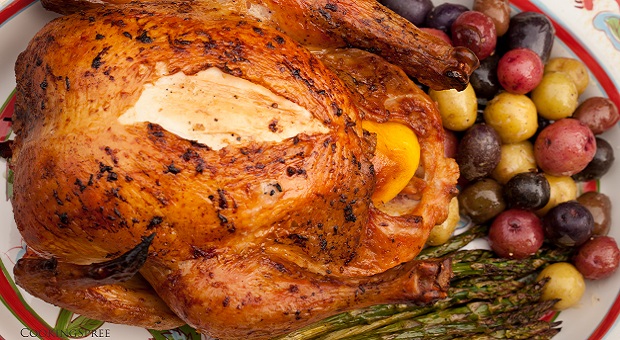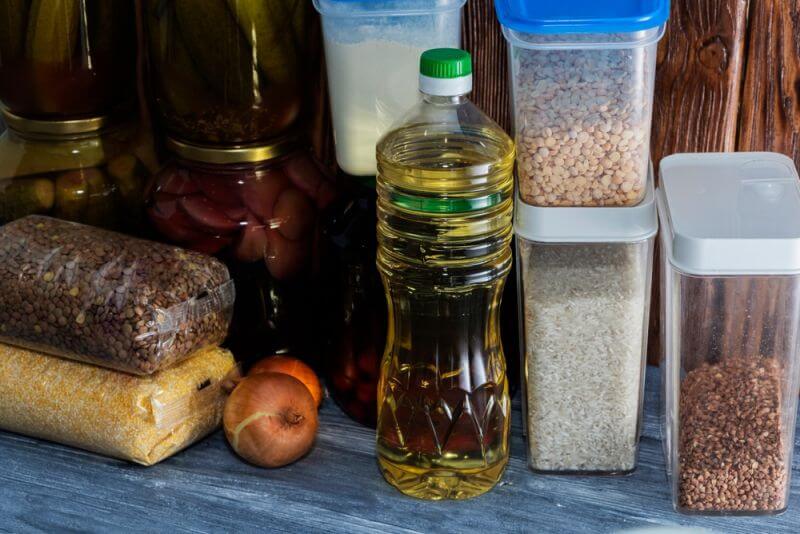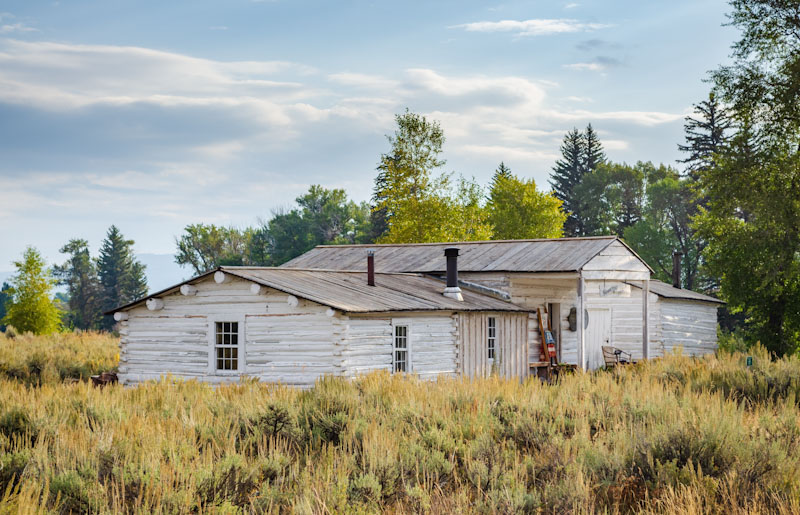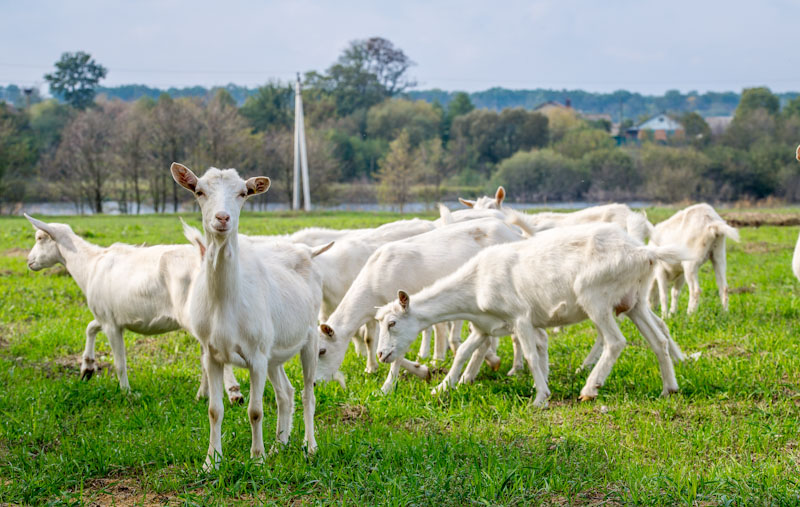Whether you’re raising broiler birds specifically for meat production, or you’ve got a flock of laying hens but some of the older ladies aren’t producing anymore, being able to slaughter and process your own birds for meat is an invaluable skill to have.
This article will review a couple of the most common methods of slaughter, and we’ll go over how to properly dress your birds and process them for consumption.
The methods we’ll review for slaughtering and processing your chickens for meat are also essentially the same as those for ducks, geese, turkeys and other birds. So once you’ve learned how to slaughter and properly process a chicken, you’ll be able to use the same general techniques for most other poultry.
Before we jump directly into slaughter, though, I’d like to include a note about preparing your chickens for slaughter. While you aren’t required to do anything special, most people will allow their chickens to sit for a day without food before slaughter.
A day without food allows the birds to process most of what they’ve eaten recently, so their crop won’t be full and you’ll have less cleaning to do when it comes to dressing the birds. That said, it isn’t strictly necessary to take their food away for a day, and you can still slaughter and dress birds that have eaten recently.
The other big tip for preparing your birds is to keep them calm before slaughter. Stress causes the birds to produce adrenaline and other hormones that can affect the taste of the meat, so you want to keep your birds calm and relaxed right up to the moment of slaughter. Finally, be sure that your tools are sterile and very sharp, it will make your job a lot easier.
Methods of Beheading
Perhaps one of the oldest methods of slaughtering your chickens, the tried and true axe or hatchet plus chopping block for a quick beheading is still the method of choice for many people around the world. To behead your chickens, simply seize them by the legs and get them stretched across a good solid log or chopping block. Many people will stun the chicken with a blow to the head prior to beheading it, but in any case be prepared for a mess.
When you behead a chicken, the autonomic nervous system takes over. As the beheaded body begins bleeding out, the bird’s system will receive an instant jolt of adrenaline. This is why beheaded chickens will run around for several minutes until they’ve bled out. One of the chief drawbacks of beheading chickens like this is that the resulting adrenaline surge causes their skin to become incredibly tight, which makes plucking the birds a royal PITA.
Other methods of beheading include laying a chicken out on the ground and placing a strong stick or broom handle over its neck, then reaching down and literally just pulling the head off in a single sharp motion. Again, it’s kind of gruesome and you can expect a mess and a harder time plucking, but it can be quite effective. This broom stick method is also very close to a common method for slaughtering rabbits, as well.
Alternatively, you can always wring the bird’s neck. Seize the bird by the neck and with a sharp flip and twist of the wrist, snap the neck as cleanly as possible. Alternatively, you can seize the bird and whip it in a circle three or four times. Either way, wringing the neck is often sufficient to cause the head to simply pop off. Once again, expect a bloody mess to result.
The Killing Cone Method
On the cleaner side of things, though there’s always an element of mess involved, the use of a killing cone is a very popular alternative that is widely used. As both a humane and cleaner method of slaughter, a killing cone allows you to keep the bird relatively calm and inhibits it from jerking or struggling even if it is startled. Killing cones are sold online from retailers like Amazon.com, as well as in local farm supply and feed stores, and basically consist of a specialized metal funnel for holding your bird with its head poking out the bottom.
You can also make your own killing cones from a variety of materials, including scrap metal sheeting, old traffic cones, and even a one gallon milk or water jug if your birds are small. The important thing is that the cone be able to hold the bird with a hole in the bottom for the bird’s head to poke through so that you can easily slaughter it.
Slaughtering is accomplished by slicing the bird’s carotid artery and/or its jugular. To do this, a cut is made along the side of the bird’s throat, just below the ear. Some people will make one cut, while others will cut the bird on both sides of the neck.
In either case, you know you’ve made the cut successfully when blood begins flowing; it may even spurt from the wound at first. Be sure to use an exceptionally sharp knife to ensure you can make a clean, humane cut the first time. Also, brush the feathers back out of your way (or pluck them off, as some people do) to ensure the blade cuts cleanly and directly through the skin.
To catch the blood, you’ll want to put a large bucket or other container beneath the killing cones. Many people like to add dry grass clippings, hay or sawdust to the container they use for the blood, since these are absorbent materials that make clean-up a lot easier. Once you’ve cut your birds, they may struggle or move a bit, but within a few seconds they are unconscious so any twitching or struggling of the body that may occur is simply due to the nervous system.
Regardless of the slaughter method you choose, it’s a good idea to wear older clothes that you won’t mind making a mess of, because killing chickens can get to be messy business. After slaughtering your birds, the next step is to process them by removing the feathers, gutting them and preparing them to be cooked and/or stored for later use.
Dressing Your Birds
Step One: Plucking
To dress your birds, you will begin by plucking the feathers. This is accomplished most easily after a good, thorough scalding of the birds, so you’ll need a large cooking pot or broiler that has enough room to submerge the whole bird comfortably with a little room to spare.
Fill your scaling pot or broiler with water and heat it to approximately 135 – 140 degrees Fahrenheit. If you’re slaughtering and dressing a large number of birds at once, you may consider setting up a scalding pot that can be kept hot by a propane burner.
Once your water has reached the desired temperature, take your birds and submerge them (headfirst) in the scalding water for approximately 30 – 45 seconds. In the water, you can either let your birds sit for that 30 – 45 seconds, or you can grip them by the feet to swirl and dip them, agitating them within the water.
To test if your birds are finished, simply pull a few feathers from the tail and/or wings. If the feathers pull away easily, the bird is ready to be plucked, but if they are still sticking strongly give it a little longer.
While scalding your birds, be sure not to overheat the water too much or leave the birds in for too long, as both of these things can result in damage to the skin or meat. Water temperatures that are too high will also cause the fat near the chicken’s bottom to render, so when you cut it open it will pour out instead of being solid. Once scalded, you can pluck the feathers by hand or use an automatic plucking tool.
Step Two: Gutting
Once you’ve plucked and cleaned your bird, you’re ready to begin gutting. To start, remove the chicken’s head with a butcher’s knife or a sharp pair of shears if you haven’t already beheaded the bird. If you intend to save the neck for later use, then cut the head off as close to the top as possible and leave the intact neck attached to the bird for now.
With the bird at this stage, you should also be able to see the crop. If the birds have been eating recently, the crop will be full, so be careful not to cut into it until you are ready to empty it, clean it and loosen it for removal.
Next you’ll move down to the tail of the bird. There is a scent gland located in the tail that produces a strong, odorous oil and you don’t want to eat it, so use a clean circular cut to remove the tail and the scent gland in it.
When you remove this gland, be careful not to cut too deeply, you don’t want to puncture any of the intestines. Salmonella bacteria are located in the guts and intestines of the bird, not the blood or meat, so you can avoid contaminating the meat by cutting carefully and not puncturing the intestines.
With the scent gland and tail removed, you will now begin gutting the bird. This is a pretty easy process, and once you’ve had some practice it can actually go quite fast. Take your sharpened knife (or a scalpel if you happen to have one) and begin cutting just above the vent area, being careful to just cut beneath the skin first.
The goal here is to create an opening into the cavity of the body, so you can either cut an opening carefully, or you can make a starter cut and then use your hands to pull the bird open.
Once you’ve created a large enough opening, it’s time to delve in with your hand. Some people do this barehanded, others wear gloves, but you’ll need to reach in with your hand in a flat position, the top of your fingers pressed upward against the breastbone of the bird.
Your goal now is to carefully scrape the intestines loose from the top and sides of the body cavity. Use a gentle, firm pressure to work your hand into the body cavity, and when your fingers can’t go in any further carefully curve them downward to scoop out the intestines. Don’t wiggle your fingers around or squeeze too much at this stage, as you don’t want to break the gall bladder while removing the guts.
Once you’ve worked the guts loose and pulled them out, set them aside and go back in for any extra bits and pieces that may be clinging to the walls of the cavity. The crop should have pulled out smoothly with the organs if you loosened it properly.
You’ll also want to make sure you’ve gotten the heart, liver and lungs out. These organ meats are highly nutritious when ingested and can be discarded or saved according to your desire. Finally, you can also remove the neck and feet at this point to do with as you see fit.
The feet should be removed by breaking the leg at the joint above the foot. You can either cut them off by cleaving through the bone, or you can use a knife to cut through the skin and tendons around the joint, then simply snap the feet off by hand. Chicken feet are great for use in making stock and soup, so don’t let them go to waste if you can help it.
Please note that if your birds have eaten recently before slaughter, in addition to their crop being full you may also have fecal material in the intestines. This can be emptied manually by applying pressure to the area around the vent before any cuts are made, or you can squeeze the intestines out after you’ve initially opened the bird up.
In either case, be careful not to get any fecal material on the bird or your work tools; if you do get fecal material on your work station, wash it down with plenty of water and a light bleach mix. Alternatively, if you work carefully you may be able to remove the intestines without causing any expulsion of fecal material.
Step Three: Cleaning & Storing
After you’ve removed all the guts it’s time to take your birds to a sink or basin and rinse them thoroughly with water. You can allow water to flow through the neck of the bird, or even fill up and rinse out the body cavity from the opening you made below, but be sure to rinse your bird very well and clean up any remaining bits that may be clinging inside.
Once your bird is rinsed, you can either continue processing it immediately into food, or you can cool it in an ice-filled cooler or in a Ziploc bag in the freezer. One gallon bags are generally sufficient for a chicken, and you can even fold / stuff the legs up into the open body cavity if you want to make the birds a little more compact and easy to store. Now the only thing left for you to do is clean up yourself and your workspace.
With those basic directions in hand, you can now get started slaughtering and dressing your very own birds. The process might take a little while at first, but once you’ve slaughtered and dressed 1 – 2 dozen birds you’ll get a better feel for it and the process will go much faster.
Also, if you are dressing older or retired laying hens who were still producing, don’t be surprised if you find a yolk or two amongst the intestines when you’re gutting the bird.
Are you prepared to slaughter and clean a chicken now, so you could have your own healthy food on the table?
This article has been written by Gaia Rady for Survivopedia.










Juan gutierrez | July 29, 2013
|
The best way to kill the chicken, which avoids the mess. Grab the it from the legs with one hand and the head with the other hand, then stretch it and snap the neck.
joseph Montgomery | November 1, 2017
|
Years ago I was shown the easiest way to kill and butcher a chicken I’d ever seen. You grab the chicken and h0ld it down while using a stick to move away from the beak 5 to 10 times. This effectively hypnotizes the chicken in place. you can release it and walk away from it and it wont move. You can then cut off the head and the chicken remains frozen in place. then proceed with the butchering as normal. We actually processed about 10 chickens in as many minutes using this process, No muss no fuss. This was an old S.F. trick and the army rangers used it also
Brian | July 14, 2020
|
Can you clarify how you are holding down the chicken and using the stick here?
Thanks!
SE Gardener | July 15, 2020
|
You left out the blood spurting all over the place including all over you. Butchering 50 broilers by yanking their head off would be really messy. Instead try kill cones – quick slice of carotid artery followed by instant brain stick. Instant painless stress-free death. Clearly you don’t know what you’re talking about. We’re not a 3rd world country…here in America we’re more humane in dispatching our livestock with the intention of imposing as little stress and pain as possible.
Judy | July 29, 2013
|
I don’t see the YouTube links (?)
admin | July 29, 2013
|
We didn’t post the youtube videos because they aren’t for everyone.
Here are the links:
https://www.youtube.com/watch?v=zhHojM2IeIE – a short video of an outdoor setup for slaughtering and processing a larger number of birds at a time
https://www.youtube.com/watch?v=96TBhTRpNP8 – another half hour long video showing how to slaughter just a bird or two in your own kitchen with no particularly special tools or kill cone
Bug | March 29, 2019
|
Do u have a vid on the hypnosis process? Cause im not getting a picture. Thanx
Gerald Andres | July 29, 2013
|
Check archives at Mother Earth News Mag. I remember someone using a method that hung the birds upside down and used a very sharp blade going through the mouth and puncturing the brain which caused the bird to release all muscle tension making it easier to pluck and also bleeding the bird while being hung upside down. That article was many years ago.
SE Gardener | July 15, 2020
|
It’s called “Pithing” and it used to be the method commercial poultry processors used up until recent times. Also known as brain stick. I use kill cones, slice with a very sharp knife, the carotid artery immediately followed with a brain stick. Instant death and the bird is in a relaxed state. Administer the brain stick the wrong way and you’ve accomplished just the opposite as the bird looks at you and the feathers are firmly gripped by underlying tissue.
Lexxus | July 29, 2013
|
I use a mashetti that is real sharp and 30 inches long…….I have a chopping block which is an old knee high round tree log……to the side I have a sanitized large waste can with lid on it. I drop the chickens head down and let him relax and lay him over the cutting area gently while holding firming; but not too tight on their two feet; and with ONE chop his head is gone…..quick and fast with this long long blade….not an axe. !!!!! I immediately place the bird in the sanitized container large enough for one bird put the lid on it and let him flip around. (you do not want too big of a container because you do not want the muscles to go tight which causes the chicken meat to be tough sometimes) No noise can be made from the “kill” because it will excite the NEXT chicken
cactusbob | July 29, 2013
|
Why waste the whole tail? Just cut away the scent gland and enjoy the fatty but very tasty tail.
E. T. | July 29, 2013
|
Here’s a simple intestinal track removal with no worries of severing it while cutting: Insert a finger into the birds vent, curve you finger once inside (making a hook) and gently pull out and presto it’s started, then just keep pulling it out till there is no more! Then proceed with the cutting and removal of the remaining guts. Even first timers can have the bird fully processed in 3 or 4 minutes using this method.
Circle P Ranch | July 30, 2013
|
We take H20 away from our birds for about a day before slaughtering them.
We then fill the h2O container with 2 -3 bottles of beer. Thirsty chickens injest the beer and we hang them by their feet, alcohol goes to their head and we behead them with a sharp knife. No fuss, no headless chickens running around, and the chickens get a “going away party”. This works reall well!!!
Steve | October 8, 2013
|
But if you give them Malt Liquor or Kool Aide you might get done for animal cruelty.
Gice them a decent Aussie, Belgian or Czech lager, pilsner, IPA or Imperial Stout.
Around 10% ABV should do nicely.
Actually has a positive effect on the flavour of the meat.
stella | February 14, 2014
|
r u serious? does that really work? I cant imagine my birds drinking it. sure wish I could get em drunk so they wont suspect or feel anything. I keep reading articles on this stuff cause their time is coming. they are pushing 5 or 6 yrs old. im so dreading it.
Stan | July 30, 2013
|
Not that this isn’t vital info, it just makes me appreciate so much more the ready-to-eat $5 Costco chickens as long as they are available.
Shirley | July 18, 2018
|
Maybe but I keep chickens for both egg and meat production and should the economy go sideways or grid down situation, I have adequate protein for survival. Also slaughtering chickens provides for scraps that can be cooked/frozen/dehydrated for my dogs…I want to prepare for them as well.
Jacqueline Pereira | July 30, 2013
|
Just want to say how very important your info is and your motivation for wanting to help humanity is what gives people hope that someone has the ability to get it together and send it out. You already know what’s coming, and to share this is going to score high with God. I know recognition is not what your after , but I feel I speak for thousands . I just had the time to tell you.
Lou Goode | July 31, 2013
|
Information is great ! Too many of your viewers are born in the city and have no idea about survival. I can’t wait to read your emails. Thank you for your help.
guy | August 2, 2013
|
In the Army years ago, we were taught a quick method. Chop the head off, gut and skin the bird. Impale on a stick so the carcass is suspended. Cover with a metal can or bucket so that nothing touches the flesh. Make the ground seal air tight by pressing into the earth and covering with dirt. Pile high with pine straw. Set fire and when it burns down……voila!
Cooked. Done.
Enjoy
sasha | March 15, 2014
|
thank you your info helped me with my school based assessment
Pingback:7 Ways To Prepare For An Economic Crisis | Survivopedia | November 7, 2016
|
Pingback:New To Prepping? Here’s Where To Start From | Survivopedia | February 23, 2017
|
Pingback:New To Prepping? Here's Where To Start From | Survivopedia | March 25, 2019
|